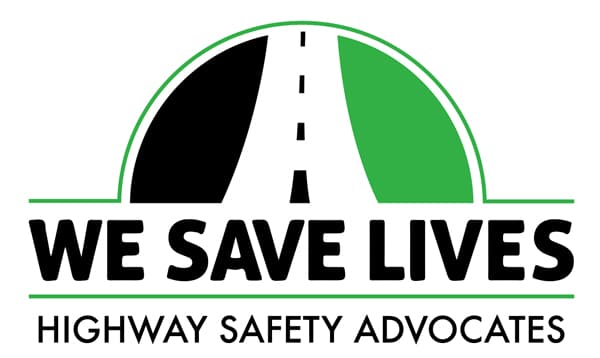Coping with Flashbacks & PTSD
For the past fifteen or more years I have specialized in providing psychological services to people who have survived serious auto crashes. From my experience in working with hundreds of survivors I have observed many common psychological characteristics to the point I would like to see a designated diagnostic classification of Vehicular Trauma Syndrome.
The common constellation of post-accident conditions includes emotional, psychological, cognitive and physical characteristics. Increasingly I have been impressed by the number of Traumatic Brain Injury (TBI) characteristics many survivors present. TBI’s are often missed by medical professionals, however I have seen significant progress in this regard over the past ten years. I have also expanded my knowledge base significantly with regard how the impact of injury to the brain impacts recovery and dictates specialized services that are needed to facilitate recovery.
The brain is estimated to have 100 Trillion neuro connections and is composed of highly specialized cells held together in a material described as toothpaste or jello- like encased in a bony skull structure that moves about in fluid. Hence, the brain is very vulnerable to violent movement due to the mechanical forces characteristic of car crashes. The brain has also been described as an endocrine gland, since every hormone produced in other areas of the body are also produced in the brain. An area that needs increased awareness in the medical community dealing with car crash survivors is how the endocrine system is vulnerable to disruption related to brain injury. I recommend that anyone with a TBI characteristic receive a neuroendocrine screening. There are over 100 known hormones in the human body that are critical to psychological and physical health.
Flashbacks of the Crash
One of the most interesting manifestations of trauma are what has been termed flashbacks which refers to the experience of reliving an overwhelming event that involved actual or threatened death or severe injury. These experiences are one of the symptoms designated in the diagnosis of Post-traumatic Stress Disorder. So what is a flashback like? I once spoke at a victim of violence conference and met another presenter who was on a panel with me. He had been a Marine Corps captain in Vietnam who lived through some extremely traumatic events. He told how he had gone to one of the Vietnam war movies that depicted an enemy ambush in a rise field. As he watched the movie, he became increasingly aware of how similar the situation was to what he had lived.
So, his heart rate increased, his breathing became shallow, his body became tense, and at some point, he was no longer watching the movie, he was reliving his experience years earlier in Vietnam. He felt his feet sinking into the mud, and the sounds and images of the battle flooded his consciousness. After a few minutes in a state of panic he fled the movie theater and found himself standing in the lobby confused, distressed, and swept away by powerful emotions he didn’t now how to manage. This is a great example of how powerful flashback experiences can be. They involve a temporary loss of control over mind and emotions. Time, memory and reality collide in a terrifying and mystifying daymare. It is often described as the feeling of going crazy.
Useful Tools for Coping with Flashbacks
One of the most useful things for people who have flashbacks from their traumatic car accident, is knowledge and awareness. By knowing flashbacks are common and normal reactions, it is profoundly reassuring for the survivor to know they are indeed not crazy. There are the minds way of attempting to process an overwhelmingly traumatic event.
Often survivors are fearful of being in vehicles again after crashes and avoid vehicle travel when possible. The range of reactions vary from feeling a little tense to full-blown panic attacks which are immobilizing. I recommend survivors have a driver’s rehabilitation evaluation to determine how the trauma has impacted their ability to safely function on the highway and to receive support and instruction. Until functionality is determined, it is wise to avoid or limit driving to assure safety.
Flashbacks and nightmares go hand in hand, and are often important topics to process in psychotherapy. There is also an approach called EMDR which stands for Eye Movement Desensitization and Reprocessing which can be useful in addressing the problem of flashbacks. Coping with Flashbacks can be done.
Some survivors find medications helpful. I believe the endocrine approach practiced by Dr. Gordon and others is very promising, but is unfamiliar to many medical professionals. One thing for certain, is if you are a survivor coping with flashbacks, it is helpful to be able to process this with a supportive professional who understands the dynamics.
In my clinical experience, flashbacks and nightmares of the crash subside with time, however can be re-triggered. They are perhaps an adaptive, survival mechanism our minds and bodies have developed to keep us safe, a releasing of fight, flight, freeze automatic responding encoded into our souls from violently destructive forces. As with most things psychological, we must make friends with the dark places and learn to be curious about them. By doing so we gain wisdom, and integrate them into the wholeness that we are.
For more information please visit: https://drjameszender.com/
Submitted by Dr. James F. Zender. PhD
We welcome Dr. James Zender as a member of the Crash Support Network and we thank him for his support.
This article is also featured in our 2020 Summer Issue of Sharing Our Recovery.
The Crash Support Network is a unique website consisting of an online support group, a Crash Survivor Blog written by a survivor, our Sharing Our Recovery Newsletter, informative articles and a Virtual Crash Memorial. Our website is based on relationship-building and puts the needs of survivors first by creating a helpful resource for victims and survivors of motor vehicle crashes.






